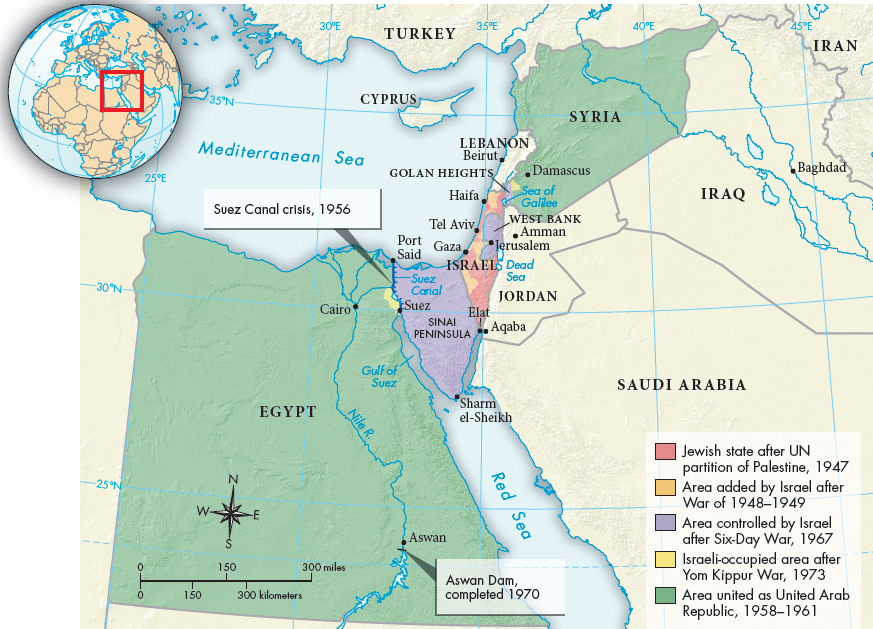The Arab-Israeli Conflict
Before the Second World War, Arab nationalists were loosely united in their opposition to the colonial powers and to Jewish migration to Palestine. Palestinian Arabs, as well as Arabs in new states forming as British and French domination of the Middle East crumbled in the aftermath of the Second World War, strenuously opposed Jewish settlement in Palestine (see “Arab-Jewish Tensions in Palestine” in Chapter 29). The British announced in early 1947 their intention to withdraw from Palestine in 1948. The difficult problem of a Jewish homeland was dumped in the lap of the United Nations. In November 1947 the UN General Assembly passed a plan to partition Palestine into two separate states — one Arab and one Jewish (Map 31.3). The Jews accepted, and the Arabs rejected, the partition of Palestine.

By early 1948 an undeclared civil war raged in Palestine. When the British mandate ended on May 14, 1948, the Jews proclaimed the state of Israel. Arab countries immediately attacked the new Jewish state, but Israeli forces drove off the invaders and conquered more territory. Roughly nine hundred thousand Palestinian refugees fled or were expelled from old Palestine. The war left an enormous legacy of Arab bitterness toward Israel and its political allies, Great Britain and the United States. In 1964 a loose union of Palestinian refugee groups opposed to Israel joined together, under the leadership of Yasir Arafat (1929–
Nationalist leaders in neighboring Syria and Egypt cultivated political support at home through fierce opposition to Israel and threats to crush it militarily. This tension repeatedly erupted into war. On June 1, 1967, when Syrian and Egyptian armies massed on Israel’s borders, the Israeli government decided to go to war, launching surprise air strikes that destroyed most of the Egyptian, Syrian, and Jordanian air forces. Over the next five days Israeli armies defeated Egyptian, Syrian, Jordanian, and Palestinian forces and took control of the Sinai Peninsula and the Gaza Strip from Egypt, the West Bank and East Jerusalem from Jordan, and the Golan Heights from Syria. In the Six-
After the war Israel began to build large Jewish settlements in the Gaza Strip and the West Bank, home to millions of Palestinians. On November 22, 1967, the UN Security Council adopted Resolution 242, which contained a “land for peace” formula by which Israel was called upon to withdraw from the occupied territories, and in return the Arab states were to withdraw all claims to Israeli territory, cease all hostilities, and recognize the sovereignty of the Israeli state. The tension between rival territorial claims persisted.